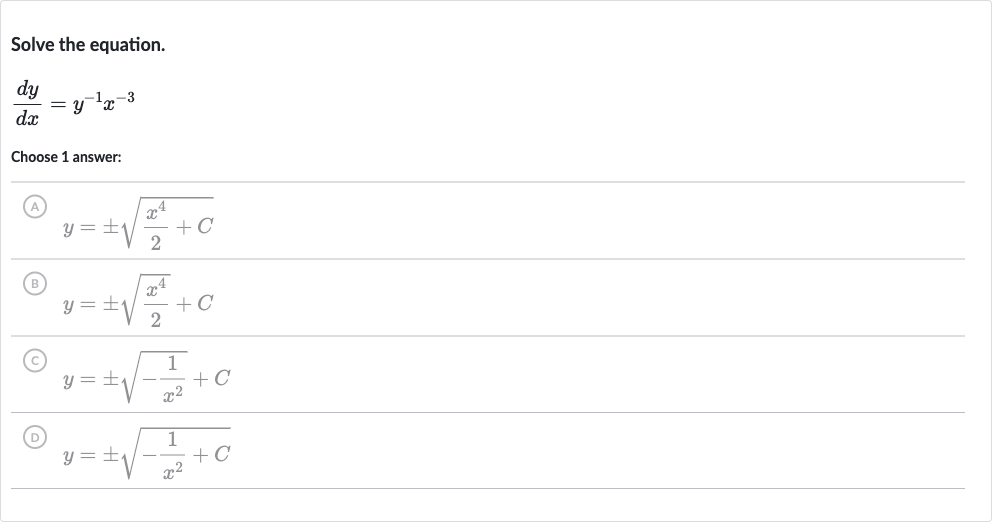AI tutor
Full solution
Q. Solve the equation.Choose answer:(A) (B) (C) (D)
- Separate Variables: We are given the differential equation . To solve this, we will separate the variables and to integrate them separately.Rearrange the equation to separate variables:
- Integrate Separately: Now integrate both sides with respect to their respective variables:
- Perform Integration: Perform the integration on both sides:where is the constant of integration.
- Solve for : Now we solve for by taking the square root of both sides:
- Check Answer Choices: We check the answer choices to see which one matches our solution:(A) - Incorrect, does not match our solution.(B) - Incorrect, does not match our solution.(C) - Incorrect, the constant should be inside the square root.(D) - Correct, matches our solution.

